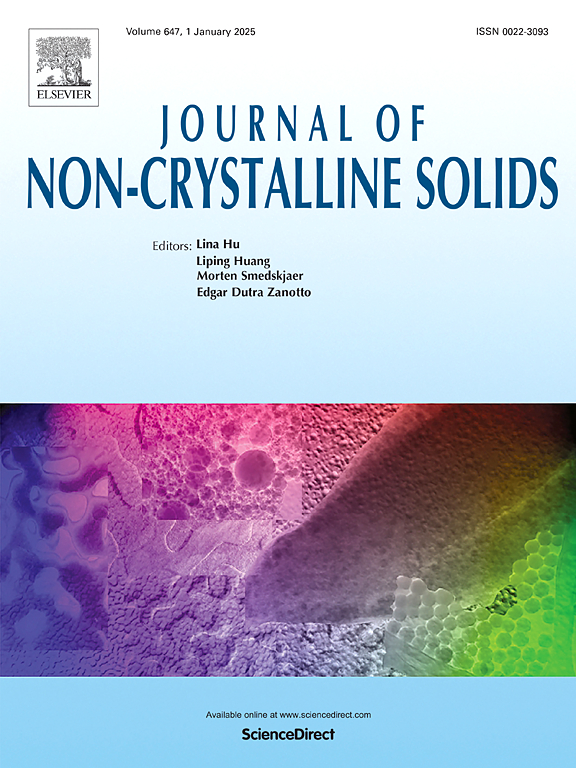高冲击速度下微粒子在非晶合金上的反弹规律
IF 3.2
3区 材料科学
Q1 MATERIALS SCIENCE, CERAMICS
引用次数: 0
摘要
与结晶合金相比,无序结构导致的非晶合金具有更高的变形弹性。然而,在这项工作中,我们使用微弹道冲击技术显示,微颗粒在锆基非晶合金上的动态回弹要小于在相应多晶靶材上的回弹。我们发现,这两种合金在低冲击速度下遵循相同的微颗粒反弹规律,但随着冲击速度的增加,非晶合金的微颗粒反弹速度下降得更快。反弹速度降低的原因是玻璃状结构中的剪切带更容易被激活,从而在微颗粒撞击过程中产生更显著的能量耗散。进一步的分析表明,非晶态合金及其晶体对应物分别在冲击波和射弹防护方面更有优势。这项研究有助于了解非晶态合金在微粒子冲击下的动态弹性和冲击能量耗散。本文章由计算机程序翻译,如有差异,请以英文原文为准。
The rebound law of micro-particle on amorphous alloys under high impact velocities
Compared to their crystalline counterparts, amorphous alloys due to disordered structures are expected to have higher elasticity of deformation. However, in this work, we use the micro-ballistic impact technique to show a smaller dynamic redound of micro-particles on a Zr-based amorphous alloy than that on its corresponding polycrystalline target. We find that the two alloys follow the same rebound law of micro-particle under low impact velocities, but with increasing impact velocity the amorphous alloy exhibits a faster decrease in rebound velocity of micro-particle. This lower rebound results from the easier activations of shear banding in glassy structures, thus contributing to more significant energy dissipation during the micro-particle impact. Further analyses imply that the amorphous alloys and their crystalline counterparts are more favorable in shock wave and projectile protection, respectively. This work is useful in the understanding of the dynamic elasticity and shock energy dissipation of amorphous alloys under micro-particle impacts.
求助全文
通过发布文献求助,成功后即可免费获取论文全文。
去求助
来源期刊

Journal of Non-crystalline Solids
工程技术-材料科学:硅酸盐
CiteScore
6.50
自引率
11.40%
发文量
576
审稿时长
35 days
期刊介绍:
The Journal of Non-Crystalline Solids publishes review articles, research papers, and Letters to the Editor on amorphous and glassy materials, including inorganic, organic, polymeric, hybrid and metallic systems. Papers on partially glassy materials, such as glass-ceramics and glass-matrix composites, and papers involving the liquid state are also included in so far as the properties of the liquid are relevant for the formation of the solid.
In all cases the papers must demonstrate both novelty and importance to the field, by way of significant advances in understanding or application of non-crystalline solids; in the case of Letters, a compelling case must also be made for expedited handling.
 求助内容:
求助内容: 应助结果提醒方式:
应助结果提醒方式:


